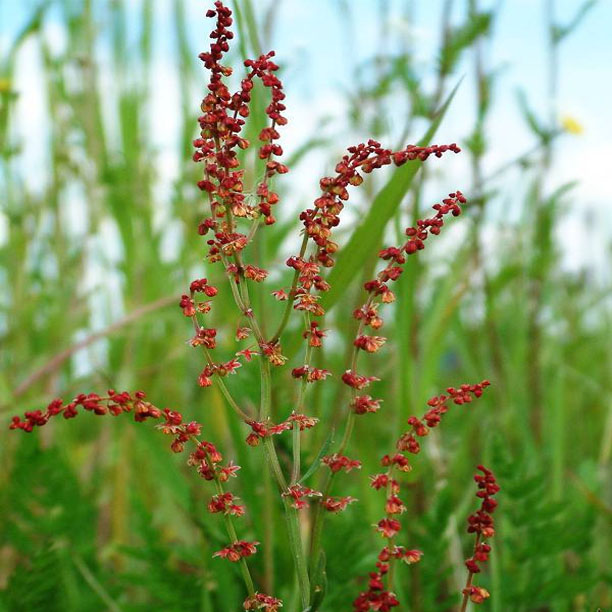Sheep Sorrel
How To Identify
Sheep sorrel is a perennial plant in the buckwheat family and is also known by field sorrel, red sorrel and sour weed. The stems are upright, branched at top, slender and reddish in color. The arrow-shaped leaves are simple, 1-3 inches long, and smooth with a pair of horizontal lobes at the base. The lower leaves are spade-shaped and without lobes. Flowers are green to red to rust brown and clustered near the top of plant. Female and male flowers are usually on separate plants; female flowers are a greenish in color and the male flowers are yellow to reddish in color. The flowers bloom between May and October. The seeds are a reddish or golden brown and can remail viable in the soil for up to 20 years and the plant roots can go as deep as 5 feet.



Benefits
Sheep sorrel has diuretic properties and can be used to treat sinusitis; it was also used in the past to prevent and treat scurvy. It contains a small amount of oxalic acid and should be avoided by people prone to kidney stones. It is also one of four ingredients in Essiac, an alternative cancer treatment. The major constituents include anthraquinones and oxalates. It has vitamin C, vitamin A, plus small amounts of several B vitamins. The herb also contains calcium, potassium, along with some magnesium, phosphorus and a small amount of zinc. Sheep sorrel also contains a number of natural phytochemicals, including several flavonoids such as quercetin, which have antioxidant properties. It also provides other compounds called anthraquinones, additional antioxidants that can benefit your digestive tract.
Sheep sorrel can also be made into a tea to treat fever or general inflammation.
How To Find
Sheep sorrel can be found in open disturbed areas, pastures, meadows, and along the roadside, and cleared right-of-ways. It prefers sandy or gravelly soils and does not tolerate shade. It’s a distinctive looking plant but if you are unsure, a tiny taste will reveal sorrel’s identity with its lemony, citrus flavor.
Gathering
It is recommended to only gather a portion of the sheep sorrel from any given area as a responsible form of foraging to allow continued growth. Only picking half the leaves from each plant allows the plant to survive and provide future harvests.
How To Use
Sheep sorrel can be used in salads or boiled as a vegetable. It can also be used as a curdling agent in milk to make cheese.
It can also be used fresh or dried in a tea. The water should be brought to a boil, removed from the heat and then add the leaves. It is not recommended to boil the leaves as this will reduce the nutritional benefits.
Preservation
To preserve the leaves, place them into a paper bag, or on a screen (window screen or similar) and allow them to dry in a dry dark place with good airflow. They can also be dehydrated using very low or no heat in a standard dehydrator or freeze dried. Oven drying isn’t recommended as the heat can damage the medicinal benefits.
July 2, 2023 @ 12:45 pm
I really like your writing style..Its so easily understandable. You can visit my blog and then maybe you can share your thought about mine.